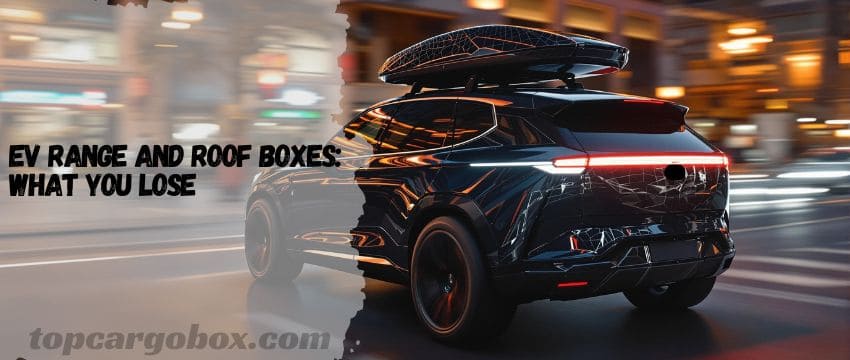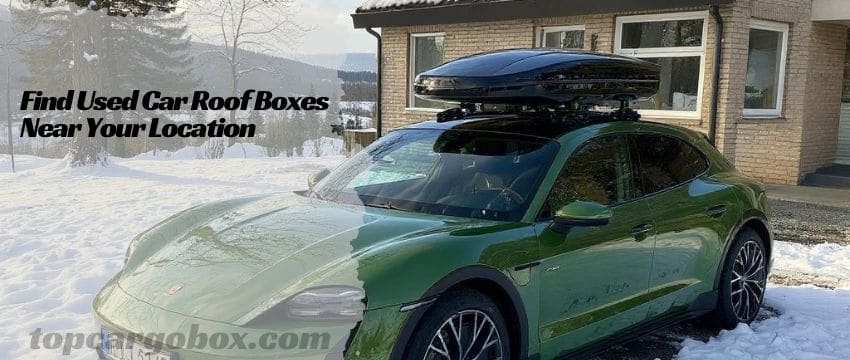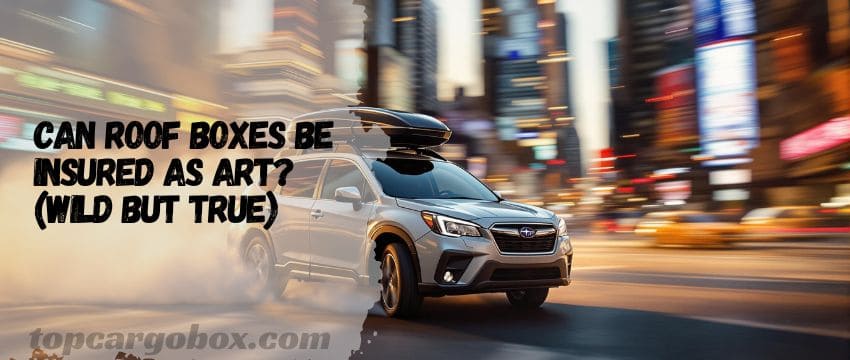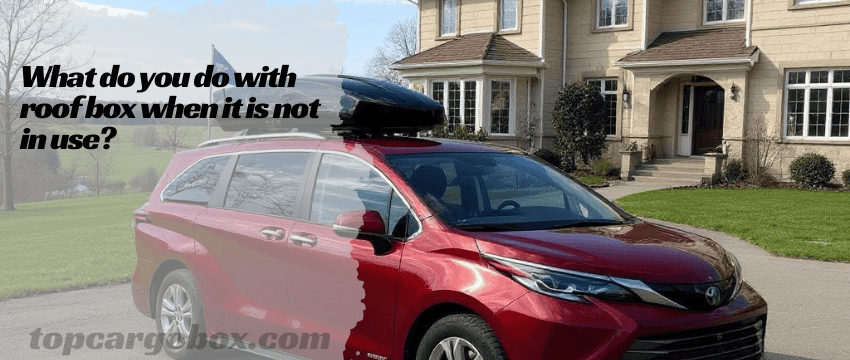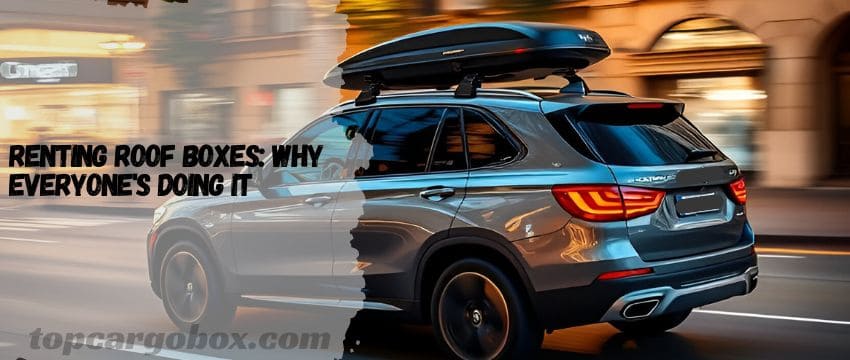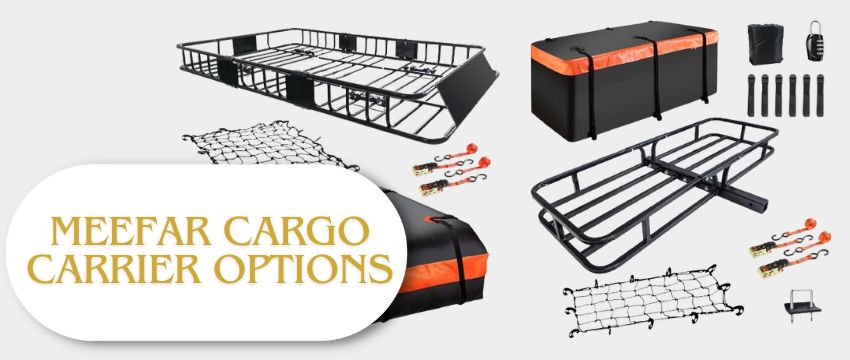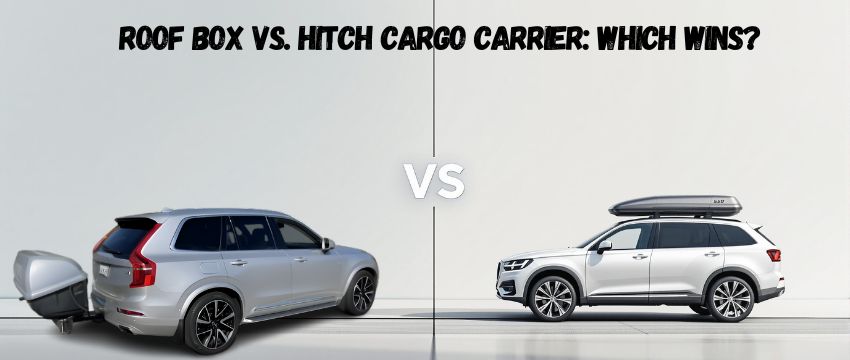What’s up, EV adventurer? So, you’ve got your awesome electric ride, you’re loving the quiet hum and instant torque, and now you’re planning that big road trip or maybe just need some extra gear space for the family haul. Naturally, your eyes land on the trusty roof box solution. I get it, totally. They look sleek, promise tons of extra cubic feet, and seem like the perfect answer. But hold up a sec! Before you click “buy now,” there’s a crucial factor for us EV drivers we absolutely need to chat about: how much that roof box is gonna cost you in precious driving range. For real? Yeah, unfortunately, slapping a big box up top isn’t free when your “fuel” is electrons stored in a battery. It’s a real drag on efficiency, and understanding how much and why is key to avoiding a nasty surprise mid-journey. Let’s break it down so you can make the smartest choice for your next adventure without getting stranded wishing for an outlet.
Why Roof Boxes Are Range Killers for EVs
Okay, let’s get into the nitty-gritty. Why does something seemingly harmless like a storage box turn into a range vampire for your electric car? It boils down to two main culprits working together: aerodynamics and weight. Think about it – your EV was meticulously designed in a wind tunnel to slice through the air with minimal resistance. That slippery shape is a massive reason it gets such great miles per kWh. Now, you plonk a big, bulky rectangle right on top, totally messing with that carefully crafted airflow. It’s like throwing a parachute out the sunroof! This creates a ton of drag – basically, the air pushes back way harder against the car, forcing the motor to work significantly harder just to maintain speed. And guess what? More work for the motor means gulping down electrons faster. The weight factor plays a role too, especially accelerating or climbing hills, but honestly, the aerodynamics are usually the bigger bad guy here. Who knew air could be so expensive?
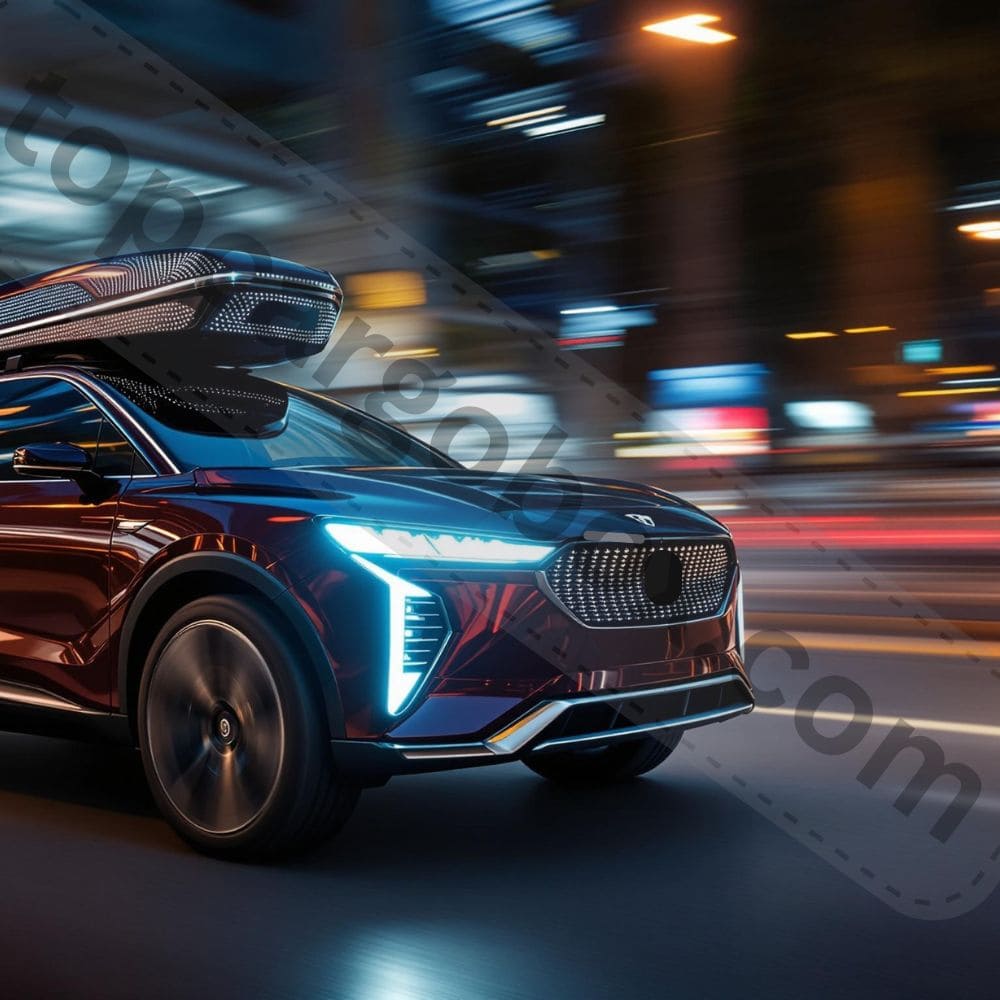
Aerodynamics 101: It’s All About the Drag
Alright, let’s geek out on aerodynamics for a minute because it’s seriously the key player. Drag Coefficient, or Cd, is basically a number that tells you how slippery a shape is through the air. Lower number = better. Your sleek EV probably has a Cd somewhere around 0.23 to 0.25, maybe even lower for some models – that’s seriously slippery! Adding a roof box? That number shoots up, sometimes by 30% or even 50%. Yikes! Imagine pushing your hand flat out the car window at 60 mph – feel that force? Now imagine holding a big dinner plate out there. That extra force resisting your car’s movement is drag, and overcoming it requires constant energy. The faster you drive, the worse this effect gets. Seriously, drag increases with the square of your speed. So, going 70 mph creates nearly twice the drag force of going 50 mph. That roof box becomes exponentially more expensive range-wise the quicker you cruise. Not cool, right?
Weight: The Silent (But Lesser) Partner in Crime
While aerodynamics steals the spotlight, we can’t totally ignore weight. Yeah, your EV battery pack is already heavy, often weighing over 1,000 pounds. Adding another 40 to 80 pounds for the box itself, plus whatever you stuff inside (camping gear, skis, suitcases – easily another 100+ pounds), definitely adds to the load. This extra mass matters most when you’re accelerating away from a stoplight or climbing a steep mountain pass. The motor has to draw more power to get that extra mass moving or keep it moving uphill. While this impact is generally smaller than the aerodynamic penalty during steady highway cruising, it’s still a factor, especially in stop-and-go traffic or hilly terrain. Every extra pound requires energy to move, and that energy comes straight from your battery. So, pack smart! Do you really need that third set of golf clubs? Maybe leave the anvil at home.
How Much Range Are We Really Talking About?
Okay, enough theory. You’re probably screaming, “Just tell me how many miles I’m gonna lose, dude!” Fair enough. The bad news? It’s significant. The good news? It varies a lot. We’re generally looking at a reduction somewhere between 15% and 30% or even more in total driving range. Yeah, that’s potentially wiping out one-third of your battery’s capacity just because of the box! Think about that for a second. Here’s the breakdown of what influences the exact hit:
- Your Driving Speed: This is HUGE. Cruising at a steady 65 mph with a box? Big hit. Sticking to back roads at 45 mph? The penalty is way less noticeable. Remember that exponential drag increase!
- The Box Design: Not all boxes are created equal! Sleeker, more aerodynamic models (think teardrop shapes) like the Thule Motion 3 or Force 3 are designed to minimize drag. Clunky, square-fronted boxes from the old school? They’ll hurt way more. Choosing wisely matters! You can check out a deep dive on the Thule Force 3 over here to see why its shape helps.
- Your Specific EV: Some EVs are just more aerodynamic to start with (lower Cd), so adding a box disrupts that more. Taller EVs (SUVs) might see a slightly smaller percentage hit than super-sleek sedans because their baseline drag is higher, but the actual miles lost can still be substantial. Also, smaller battery packs feel the percentage loss more acutely in terms of total miles available.
- How Loaded the Box Is: Packing it to the gills adds weight and can sometimes slightly worsen the aerodynamics if stuff bulges out. Keep it streamlined inside too!
Real-World Examples: Seeing is Believing
Let’s make this concrete. Imagine you’re driving a popular EV like a Tesla Model Y Long Range. Under ideal conditions, maybe you get around 320 miles on a full charge on the highway. Slap a decently aerodynamic roof box on top, empty. At 70 mph, you might see your range drop to around 250-260 miles. That’s a loss of 60-70 miles! Now, load it up with gear for a week’s vacation (adding maybe 150 pounds), and cruising at the same speed, you could easily dip down to 220-230 miles of range. That’s nearly 100 miles gone! Or take a more efficient sedan like a Hyundai Ioniq 6. Maybe it gets 360 miles highway. Add a box? You could be looking at 280-290 miles realistically with the box empty at speed. It forces you to plan charging stops way more carefully, potentially adding significant time to your trip. Bummer, right? Suddenly that extra space feels less convenient.
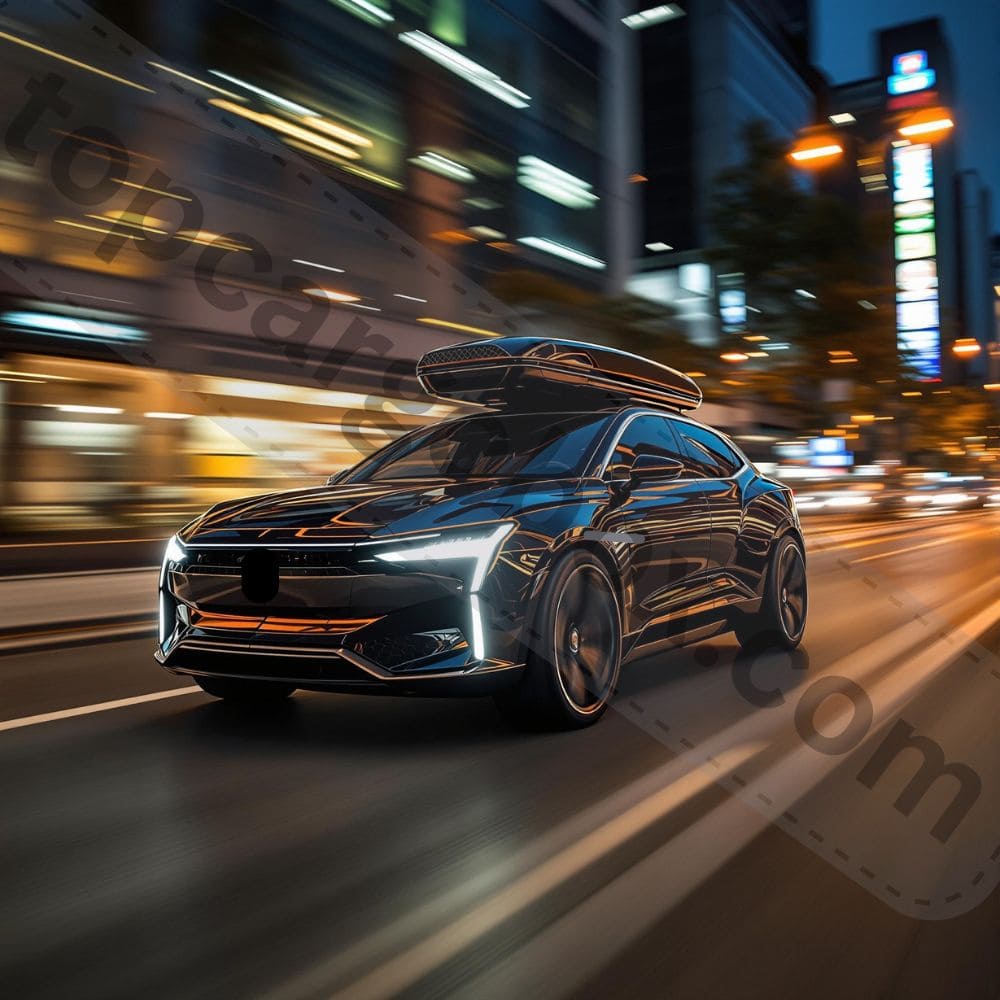
It’s Not Just EVs: But EVs Feel It More
“Hold on,” you might think, “my buddy with a gas SUV uses a roof box and just complains about worse MPG, not getting stranded!” You’re right, absolutely. Roof boxes hurt the fuel economy of gasoline and diesel cars too – often by a similar 15-30%. The physics of drag and weight don’t discriminate. So how much do roof boxes affect fuel consumption? Pretty substantially! But here’s the crucial difference for us EV drivers: Refueling Speed and Infrastructure. When a gas car loses range, pulling into a gas station takes 5 minutes, and you’re back to 100% range. Done. Easy. For an EV, losing 30% range means:
- More Frequent Stops: You hit that 10-20% battery warning much sooner, forcing stops you wouldn’t otherwise need.
- Longer Stop Duration: Charging, even at a fast DC charger, takes 20 minutes to an hour to get a significant boost, not 5 minutes.
- Charger Anxiety: Finding available, working fast chargers, especially on busy routes, adds stress and potential delays.
That range loss translates directly into significant time penalties and trip-planning headaches. It’s a whole different ballgame. The convenience factor takes a major hit.
Choosing the Right Roof Box: Minimizing the Pain
Okay, so you still need the space. I feel you. The key is choosing the box that’s gonna suck the least amount of range from your precious battery. Forget the old-school square bricks. Look for these features:
- Sleek, Teardrop Shape: This is non-negotiable. A smooth, rounded front that tapers towards the rear slices through the air far better than a flat, vertical face. It guides the airflow over the box instead of slamming into a wall. Models like the Thule Motion series (check out how the Motion 3 stacks up here) or the Yakima SkyBox Carbonite are designed with this in mind.
- Low Profile: The shorter the box sits above your roof rails, the less it disrupts the airflow over your car. Every inch counts.
- Material: While heavier-duty boxes feel robust, consider weight. Some modern boxes use composite materials that are strong but lighter than older fiberglass designs. Less weight = less penalty accelerating and climbing. Wondering how long cargo boxes last? Durability matters too, but newer materials balance lifespan and weight well – get the lowdown here.
- Size Appropriately: Get a box big enough for your needs, but don’t go massive just because you can. A longer/wider box creates more frontal area and more drag. Pack smartly and only buy the capacity you truly need. See the best roof cargo boxes in 2025 for well-rated aerodynamic options here.
Driving Smarter: How to Get Some Range Back
You’ve got the box, it’s loaded, and you’re hitting the road. How can you claw back some of those lost miles? Driving style becomes super important:
- Slow Down, Seriously: This is the single biggest thing you can control. Reducing highway speed from 75 mph to 65 mph can make a massive difference in range with a roof box attached. Remember that drag increases exponentially! It might feel like a grunt, but the extra time spent driving slower can be less than the time spent charging more often. Chill out, enjoy the scenery.
- Use Cruise Control (Wisely): Maintaining a super steady speed on the highway is more efficient than constantly speeding up and slowing down. Gentle acceleration is key.
- Plan Your Route Carefully: Use your EV’s nav system or apps like A Better Routeplanner (ABRP) that factor in elevation changes, wind, and even temperature. Avoid massive mountain passes if a slightly longer, flatter route exists. Charge more often than you think you need to, especially heading into remote areas. Don’t gamble!
- Remove the Box When Not in Use: This seems obvious, but seriously, take it off! Don’t leave it on for weeks just because it’s a hassle. That constant drag, even on short commutes, adds up needlessly. It only takes a few minutes with most modern mounting systems. Your range (and maybe your car wash bill) will thank you.
- Precondition While Plugged In: If you’re starting a trip in cold weather, precondition the cabin and the battery while the car is still plugged in. This means the battery starts at an optimal temperature, and you’re not wasting range heating up the interior from the battery alone. Same goes for cooling in extreme heat.
The Bigger Picture: What Reduces EV Range Anyway?
While the roof box is a major factor, especially for trips, it’s good to remember it’s not the only thing that can leave you sweating over your remaining miles. What factors affect the range of an electric car? Tons of things! Here’s a quick rundown:
- Speed: We covered this – faster = less efficient. Big time.
- Weather: Cold temperatures are brutal. They reduce battery chemical efficiency and require energy for cabin heating. Using resistive heating (common in many EVs) is a huge drain. Heat pumps help but still use energy. Very hot weather increases AC use and can also stress the battery cooling system.
- Climate Control: Blasting the heat or AC uses significant power, directly reducing range. Preconditioning while plugged in is crucial. Seat heaters are often more efficient than cabin heat.
- Tires: Underinflated tires increase rolling resistance. Performance tires usually have more grip but also more rolling resistance than eco-focused tires. Proper inflation is essential!
- Terrain: Driving uphill constantly consumes way more energy. Regenerative braking helps recapture some energy going downhill, but you never get back everything you spent going up. Mountainous routes require careful planning.
- Accessories: Besides roof boxes, things like bike racks (especially front-mounted), roof tents, or even wide, aggressive tires/wheels can increase drag or rolling resistance. Basically, anything that changes the car’s shape or contact patch.
- Battery Age & Health: Over many years and charging cycles, batteries slowly lose some of their maximum capacity. A battery with only 90% of its original health simply can’t hold as much energy as a new one. What reduces the range of an electric car? All of the above! It’s a combination game.
Beyond the Roof Box: Boosting Your EV Range
So, you want to maximize those miles, with or without the box? How to increase the range of an electric car? Focus on efficiency:
- Master the Art of Smooth Driving: Jackrabbit starts are your enemy. Accelerate gently. Anticipate stops to maximize regenerative braking. It’s not about being slow; it’s about being smooth.
- Become a Tire Pressure Ninja: Check your tire pressure at least monthly, and definitely before any long trip. Underinflated tires are range killers. Follow the manufacturer’s recommended pressure (often found on the driver’s door jamb sticker, not the tire sidewall!).
- Climate Control Strategist: Use seat heaters and steering wheel heaters instead of cranking the cabin heat when possible – they use less power. Precondition the cabin while plugged in. Park in the shade in summer. Use the AC judiciously, maybe relying more on venting initially.
- Shed Unnecessary Weight: That gym bag permanently living in your trunk? The collection of emergency water bottles? Extra weight requires extra energy to move. Clean out the junk!
- Plan Efficient Routes: Use your EV’s navigation or dedicated apps. They consider elevation, traffic, and charger locations to find the most efficient path, not necessarily the shortest distance. Sometimes going a few miles further on a flatter road is faster overall due to less energy use and fewer charging stops.
Wrapping It Up: Adventure Ready, Range Aware
Look, needing extra space is legit. Roof boxes are a super convenient solution, and modern aerodynamic designs are way better than the bricks of yesteryear. But for EV drivers, slapping one on top comes with a significant, unavoidable cost in driving range – primarily due to messed-up aerodynamics, with weight playing a supporting role. We’re talking 15% to 30% or more range loss, heavily influenced by your speed and the box’s design.
The key is going in with your eyes wide open. Choose the sleekest, most aerodynamic box you can find and afford. Size it appropriately. Drive slower than you normally would. Plan your charging stops meticulously, adding buffer room. And for heaven’s sake, take the darn thing off when you don’t need it! By understanding the impact and adapting your plans, you can absolutely still hit the road for those epic adventures with all your gear. You’ve got this! Just respect the range hit, plan accordingly, and enjoy the ride. Safe travels!
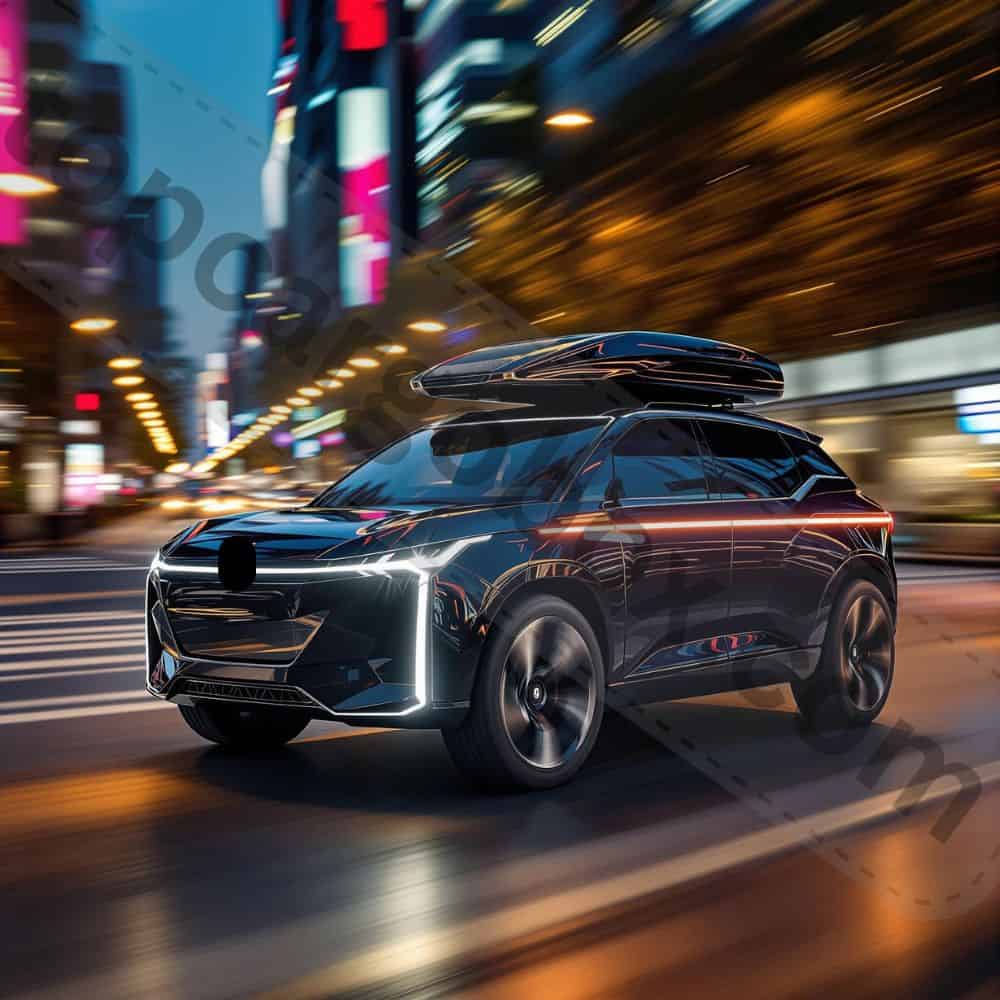
Your EV Range & Roof Box Questions Answered
How much does a roof box affect EV range?
Dude, it can be a real bummer! Generally, expect to lose somewhere between 15% and 30% of your total driving range with a roof box installed. For real? Yeah, seriously. Think about it – cruising at highway speeds, that sleek design you love gets totally messed up by this big box acting like a sail. The faster you go, the worse it gets. So, if your EV normally gets 300 miles, with a box you might only see 210 to 255 miles on a full charge, especially if it’s loaded up. It forces way more charging stops, adding time to your trip. Choosing a super aerodynamic box and driving slower helps, but it’s a significant penalty you gotta plan for.
What reduces the range of an electric car?
Oh man, tons of things can zap those precious miles! Speed is a massive one – going faster creates way more wind resistance. Cold weather is brutal; it makes the battery less efficient and you need heat, which uses loads of power. Blasting the AC in summer does the same thing. Underinflated tires make the motor work harder to roll. Driving up mountains constantly uses way more juice than flat roads. Even accessories like bike racks or bulky roof boxes (obviously!) wreck your aerodynamics. And over time, the battery itself slowly loses a bit of its max capacity. It’s a constant battle against physics and the elements! Keeping your speed down and tires pumped is the easiest win.
How much do roof boxes affect fuel consumption?
They hit gas guzzlers hard too, no doubt! You’re generally looking at a similar hit: 15% to 30% worse fuel economy. That aerodynamic drag penalty doesn’t care if your engine runs on gas or electrons. So, your SUV getting 25 MPG highway might drop down to around 17.5 to 21.25 MPG with a box up top. That adds up fast at the pump! The key difference is the pain point – pulling into a gas station for a 5-minute fill-up is way less stressful than finding and waiting at an EV charger for 30+ minutes when your range suddenly vanishes. The inconvenience factor is much higher for EVs, even if the percentage loss is similar.
What factors affect the range of an electric car?
It’s like a perfect storm sometimes! Top culprits are speed (highway driving kills range), temperature (cold is the worst, hot needs AC), and heavy climate control use (heating/cooling the cabin). Your driving style matters big time – aggressive acceleration is inefficient. Tire pressure and type play a role (soft tires = more rolling resistance). Terrain is huge – constant hills drain the battery fast. Accessories like roof boxes, racks, or even heavy cargo add weight and drag. Battery age and health mean an older battery simply holds less charge. Even strong headwinds can make a noticeable dent. It’s all about how much energy you’re using to overcome resistance and power accessories.
How to increase the range of an electric car?
Want to squeeze out more miles? Chill on the accelerator – smooth, gentle driving is way more efficient than stomping on it. Check your tire pressure religiously; underinflated tires are a silent range killer. Be smart with climate control: use seat heaters instead of cabin heat when possible, precondition while plugged in, and don’t overcool in summer. Shed unnecessary weight from your trunk – every pound counts. Plan routes using your car’s nav or apps like ABRP; they find efficient paths and essential chargers. And obviously, remove roof boxes or racks when you’re not actively using them. Little changes add up to more miles between charges!
Our team is creating outdoor-gear relevant articles with passion. If our articles can help you to find the correct solutions for your questions, we will be happy about that. In the content creation process, we usually collect accurate and useful information online or offline to compile our content in an organized way. Consequently, we can guarantee that you can discover some expected answers to your questions. We appreciate your time on our site.

